And then we finally reached the Imperial Citadel Thang Long which represented the seat of the regional authority for around 1300 years without interruption. Namely, this area was in between the impacts coming from the north, from China, and from the Kingdom of Champa in the south.
The site consists of two sections separated by a street – buildings of the Imperial Citadel and the remains of an archaeological site. What the visitors may see nowadays represents only the best preserved parts of the old citadel Thang Long. The citadel was built in the 11th century by the Vietnamese dynasty Ly on the remains of a 7th century Chinese fortress. The complex used to consist of three rings of fortifications that protected each other, with the Forbidden City in the middle. In between the ramparts, there used to be palaces, towers, pavilions, pagodas and temples.
This was also where the headquarters of the North Vietnamese government and army was during the American War, which is the name logically given by the Vietnamese to the Vietnam War (1954-1975). Of course, a lot has been destroyed, but there is still the central axis which leads from the Flag Tower, via the South Gate, remains of the foundations of the imperial Kinh Thien Palace, and further to the North Gate. By the way, the arrangement of the buildings reflected the rules of phong thuy, which is the Vietnamese version of feng shui.
The demolition of the Imperial Citadel first started at the beginning of the 19th century when King Gia Long moved the capital of the country to the city of Hue, then it continued at the end of the 19th century with the French, and then there came the 20th century wars with France and the USA, so it’s a good thing that anything at all has survived.
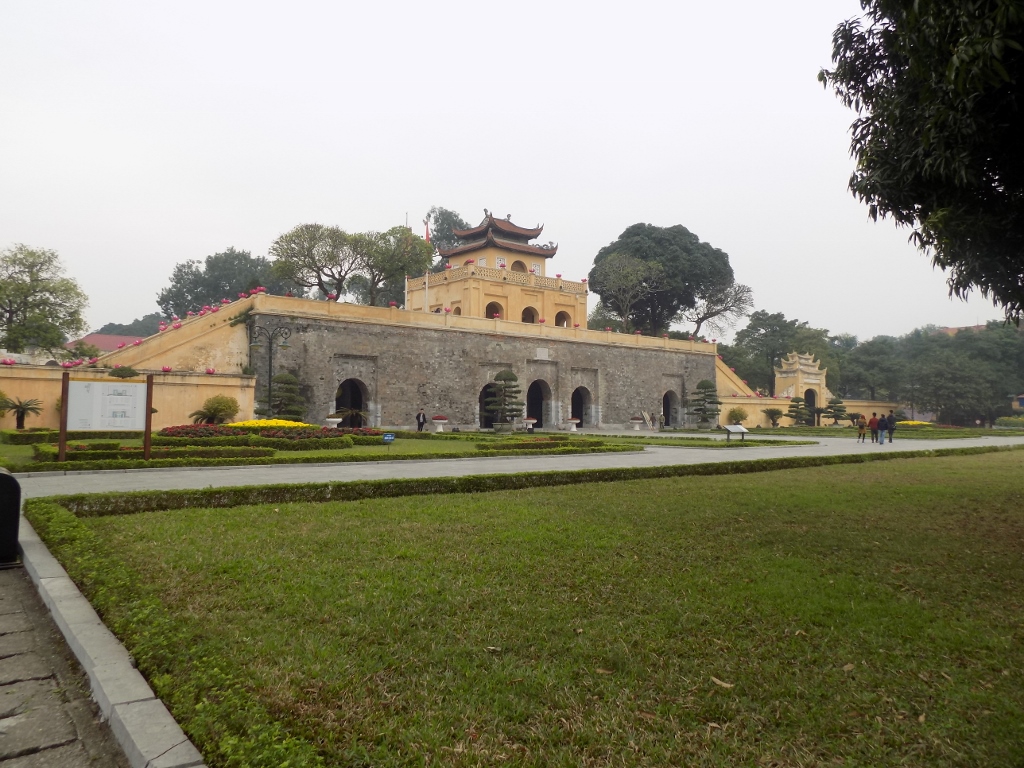 Imperial Citadel Thang Long, South Gate
Imperial Citadel Thang Long, South Gate
Only the emperor was allowed to pass through the central door of the South Gate leading to the Forbidden City, while the side doors were intended for the passage of mandarins (who were court officials) and members of the imperial family. The present-day South Gate comes from the 17th-18th century, but the excavations have shown that its foundations date back to the very beginning of the 11th century.
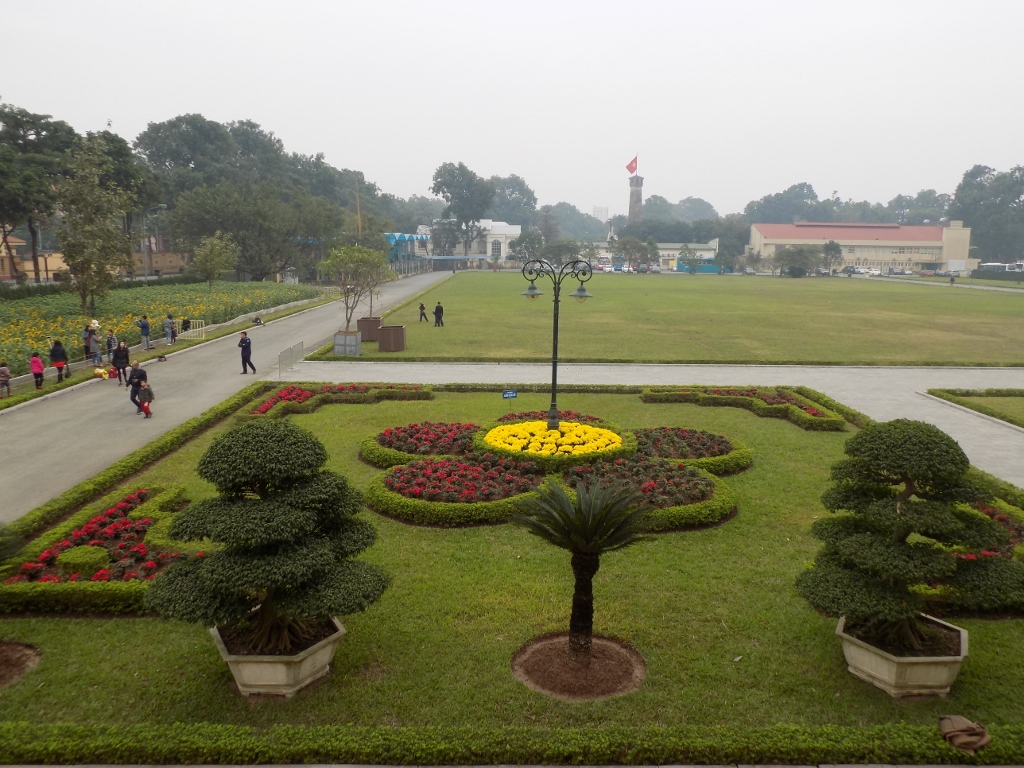 Imperial Citadel Thang Long, view from the South Gate towards the Flag Tower
Imperial Citadel Thang Long, view from the South Gate towards the Flag Tower
I found it interesting that within the citadel’s complex there were a couple of plots with sunflowers. I don’t know if sunflowers have any special meaning in the Vietnamese culture, but a large number of visitors entered these fields and had their photos taken.
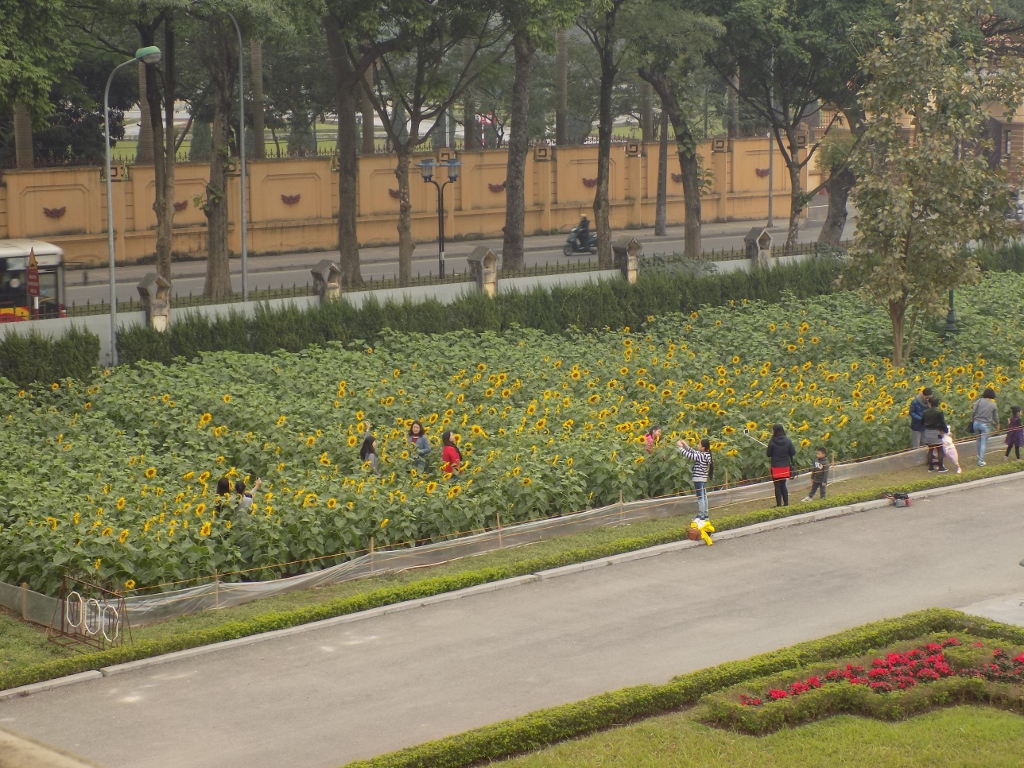 Imperial Citadel Thang Long, a sunflower field
Imperial Citadel Thang Long, a sunflower field
We climbed the South Gate in order to visit it thoroughly, but in addition to the typical and very picturesque architecture (the roofs are particularly fascinating) and some exterior ornamental elements, there was nothing else to see. This is not surprising bearing in mind the history and the long period of devastation.
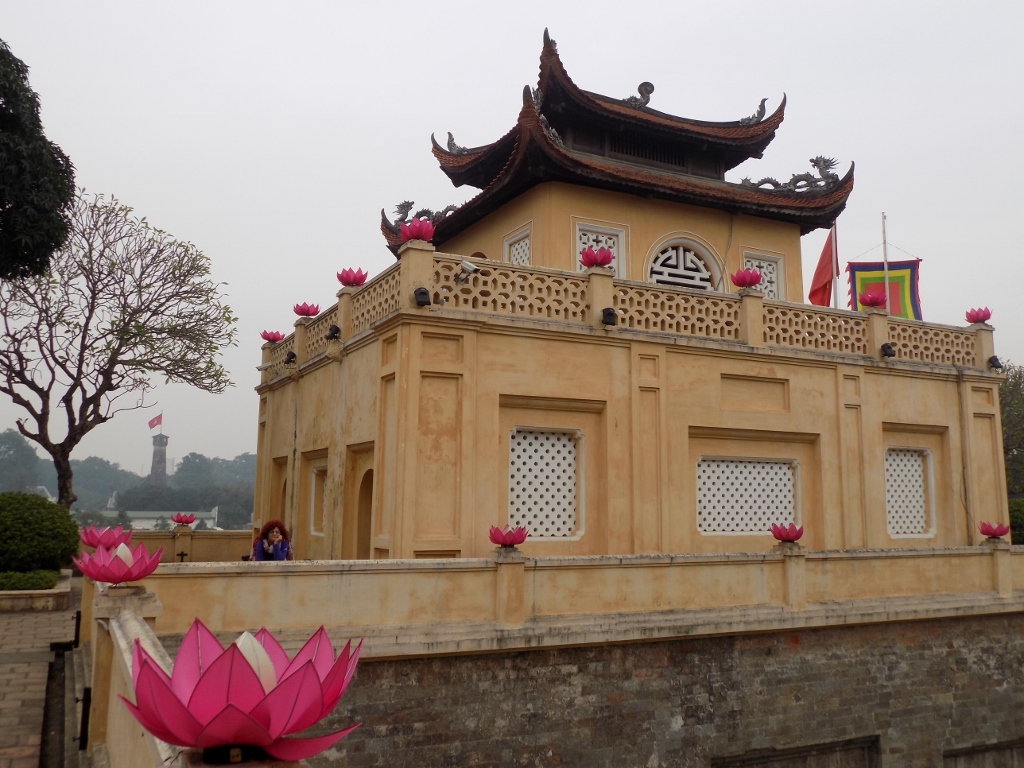 Top of the South Gate, with the Flat Tower in the distance to the left
Top of the South Gate, with the Flat Tower in the distance to the left
Then we visited a small museum within the remaining complex where it is possible to see extraordinary remains of large terracotta figures and dishes found during archaeological excavations.
We also visited some underground premises where the headquarters of the North Vietnamese forces used to be. In addition to the museum exhibition, including a meeting and planning room, as well as telephone booths for communications, there are also numerous photos that illustrate the suffering of the Vietnamese people, as well as its exceptional resilience and resourcefulness in fighting militarily and financially significantly stronger enemy.
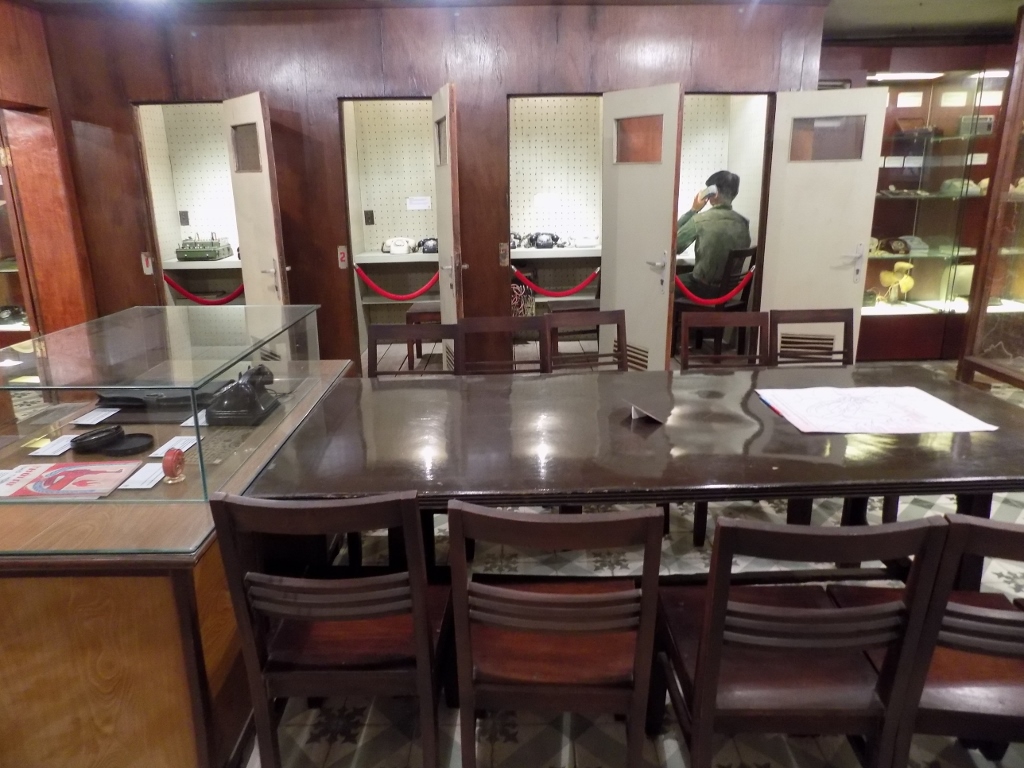 Imperial Citadel Thang Long, this is where the HQ of the North Vietnamese army made its plans
Imperial Citadel Thang Long, this is where the HQ of the North Vietnamese army made its plans
Then we walked a little more around the site and passed by the foundations of the Kinh Thien Palace, but other than the staircase with dragons, we couldn’t see anything else. We couldn’t even approach the staircase, since everything was fended off and inaccessible.
Then, after passing a section where more archaeological excavations were being done, we came to the Ladies’ Pavilion, but again except for a smallish building, there was nothing particularly interesting there.
After this, we left the complex through a side exit, crossed the street there and we were already at the archaeological site behind which we could see the back side of the National Assembly of Vietnam building.
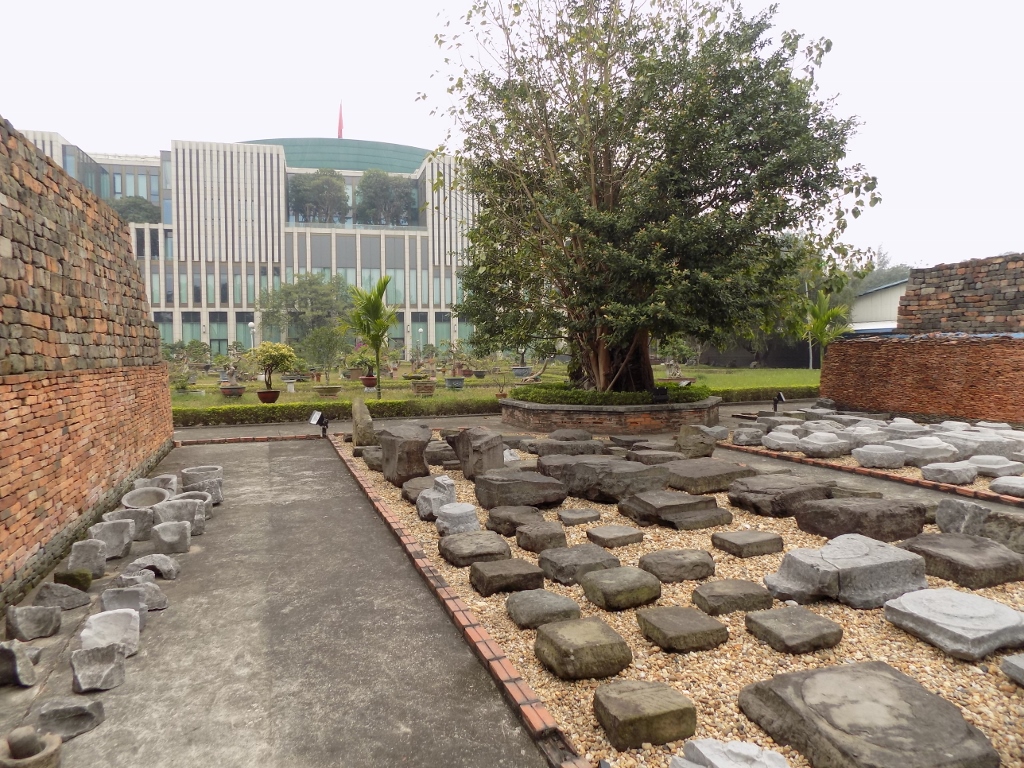 Archaeological site and the National Assembly of Vietnam
Archaeological site and the National Assembly of Vietnam
Although this section is separated from the central axis of the Imperial Citadel nowadays, in the past it used to be its integral part. Here are remains of the foundations of palaces belonging to the Ly and Tran dynasties from the period from the 11th to the 14th century. In addition to the remains of the palaces, it is also possible to see remains of an extraordinarily designed water drainage system, and between two large covered sections, there is a central pond.
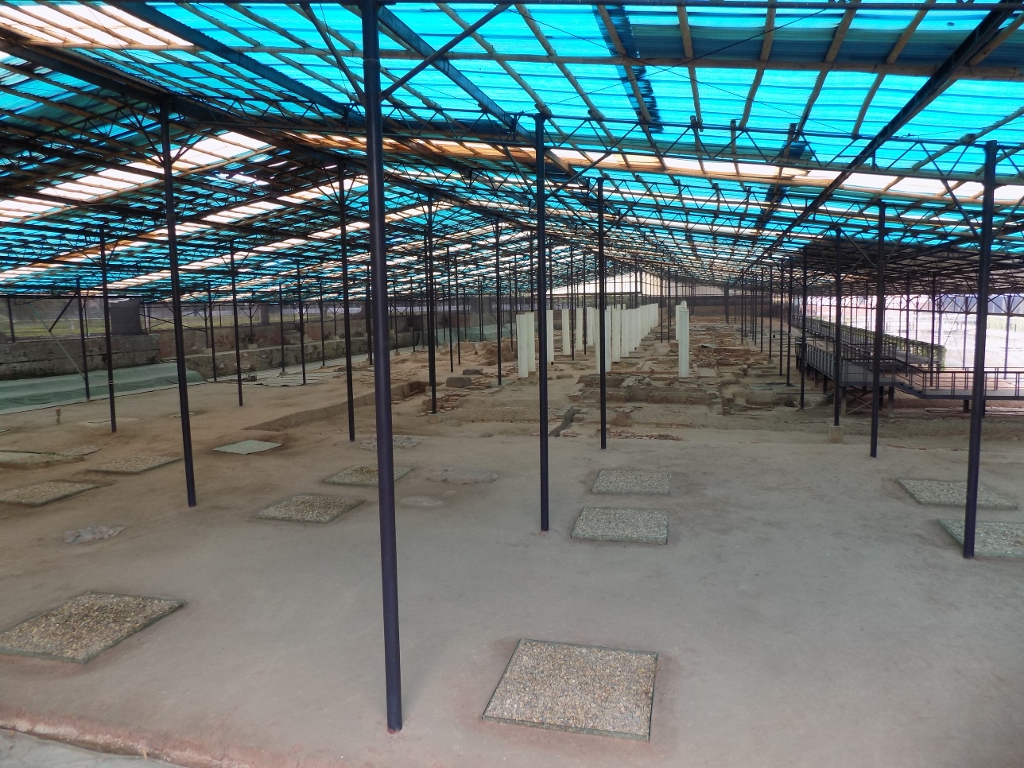 Archaeological site which belongs to the Imperial Citadel complex
Archaeological site which belongs to the Imperial Citadel complex
One well was particularly interesting in terms of the way in which it was built and it comes from the period of the Tran dynasty (13th-14th century).
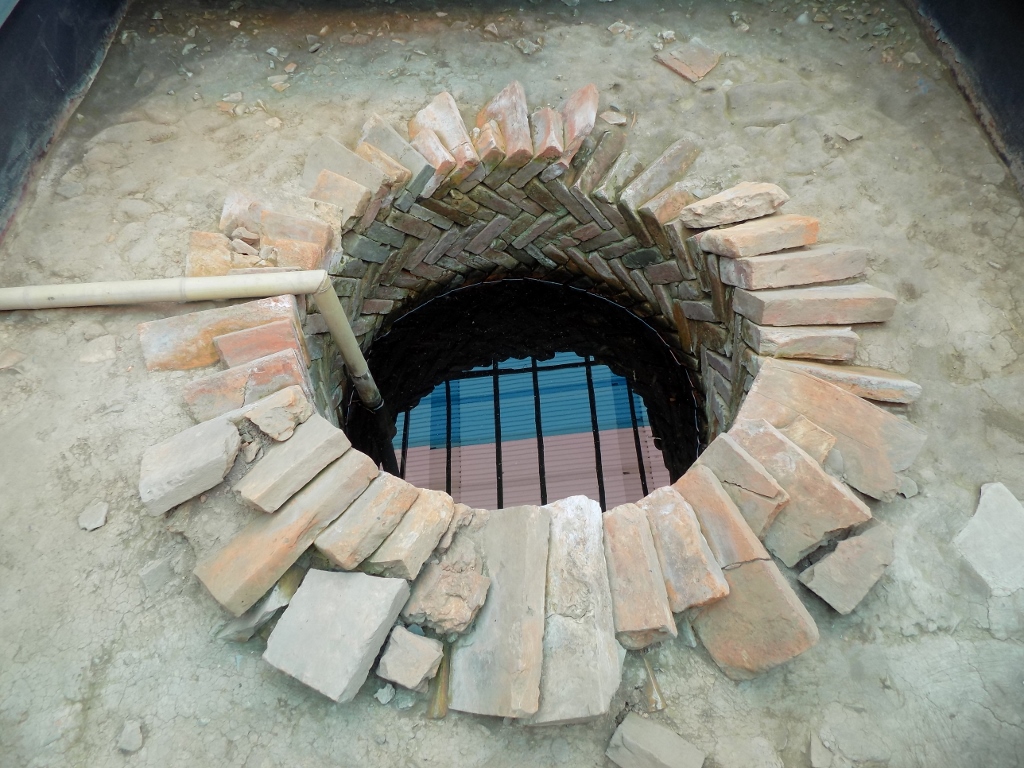 A well within the archaeological site that belongs to the Imperial Citadel complex
A well within the archaeological site that belongs to the Imperial Citadel complex
In order to get to the North Gate, which is located in the continuation of the central axis of the Imperial Citadel Thang Long, it is necessary to get out in the street and go along it until the end of the block, i.e., until the north section of the complex where the gate may be visited from the outside. It was built in 1805, when the Citadel was reconstructed, and it is the only one of the five outside gates that survived the French military attack at the end of the 19th century, but the impacts of the French cannon balls can still be seen on it.
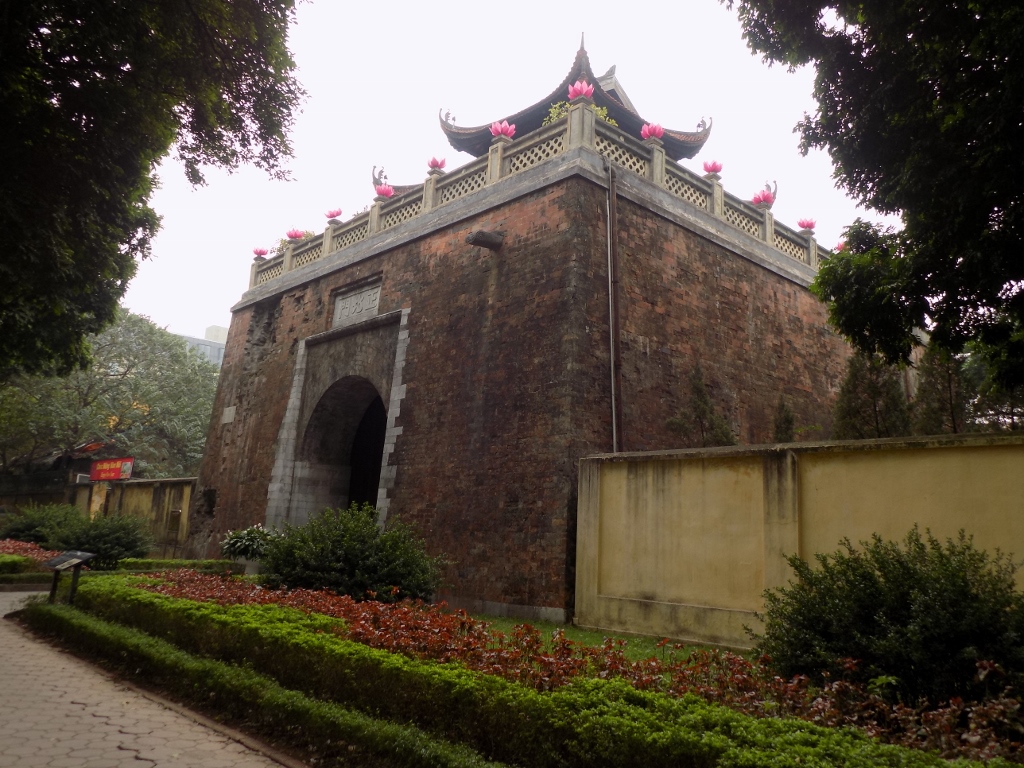 North Gate of the Imperial Citadel Thang Long, left from the passage, on the wall up and down, it is possible to see the holes made by the French cannon balls
North Gate of the Imperial Citadel Thang Long, left from the passage, on the wall up and down, it is possible to see the holes made by the French cannon balls
On the top of the gate, there is a pavilion with a temple and in addition to fantastic architectural elements, here I saw for the first time a bonsai composition in water, with plants growing on stones and with decorative elements including temples and humans. Later, while travelling around Vietnam, I realized that such compositions were a frequent occurrence.
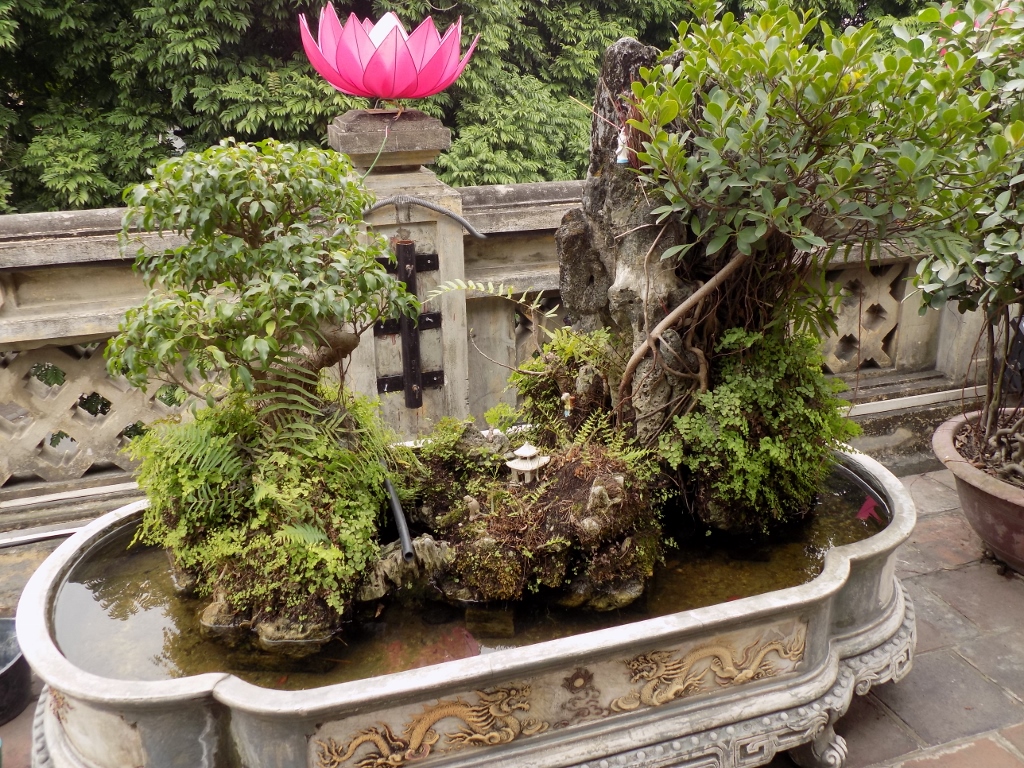 Bonsai composition on the top of the North Gate
Bonsai composition on the top of the North Gate
After a pleasant coffee break right across the North Gate, we walked to West Lake, but there we did not stay for long at all, opting rather to return to the Quan Thanh Temple that was originally built at the beginning of the 11th century, although its present-day appearance dates back to the 19th century.
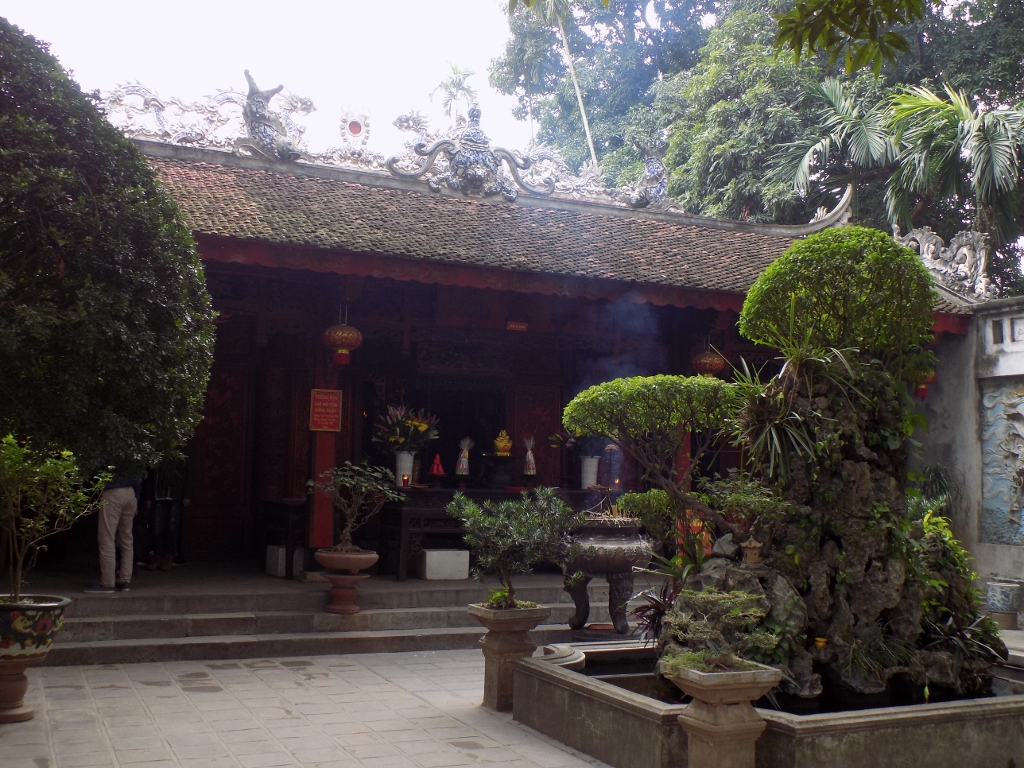 Courtyard in front of the sanctuary of the Quan Thanh Temple – here is again a bonsai composition
Courtyard in front of the sanctuary of the Quan Thanh Temple – here is again a bonsai composition
Then we headed towards the Mausoleum of President Ho Chi Minh, but before getting there we visited the complex in which Ho Chi Minh used to live and work. From there it is possible to see nicely the Presidential Palace whose park is linked to the complex earmarked for tourist visits.
Here, one may see buildings in which President Ho Chi Minh used to hold meetings, where he worked and slept, as well as the cars in which he was driven. There is also a park with a pond containing numerous gold fish.
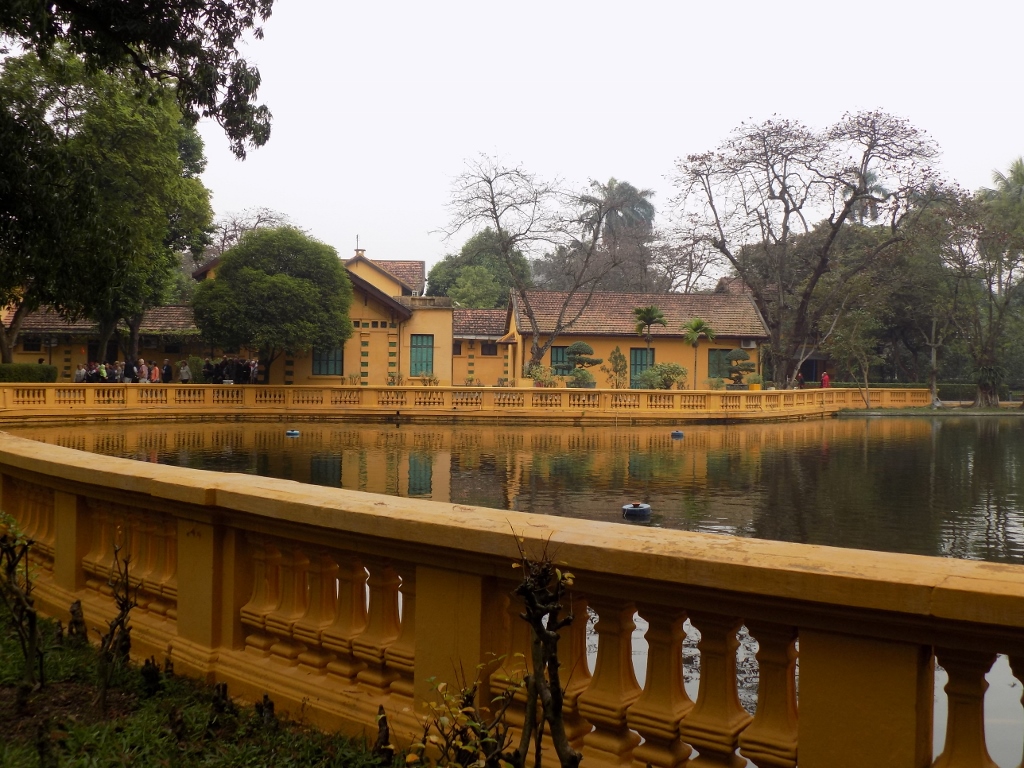 A part of the complex in which President Ho Chi Minh used to live and work
A part of the complex in which President Ho Chi Minh used to live and work
Then the sightseeing route goes behind the mausoleum itself, all the way to the Pillar Pagoda and the museum dedicated to Ho Chi Minh. We wanted to visit the mausoleum, but it was closed. In front of it there is a large plateau and on the opposite side of the plateau there is the National Assembly of the Republic of Vietnam. Later we found out that the daily visitor quota had been met already during the morning. Namely, since it was Sunday and a large number of Vietnamese come from the farthest regions in the country to visit the mausoleum of the great “Uncle Ho,” one had to wait for some 3 hours that morning in order to get into the mausoleum and thus the number of visitors allowed in during a day was reached quite early. The mummified body of Ho Chi Minh is kept in air-conditioned space and once a year it is sent to Russia for reparation, so it is not a good thing if a large number of people disturb the interior environment with the temperature of their bodies and by exhaling warm air.
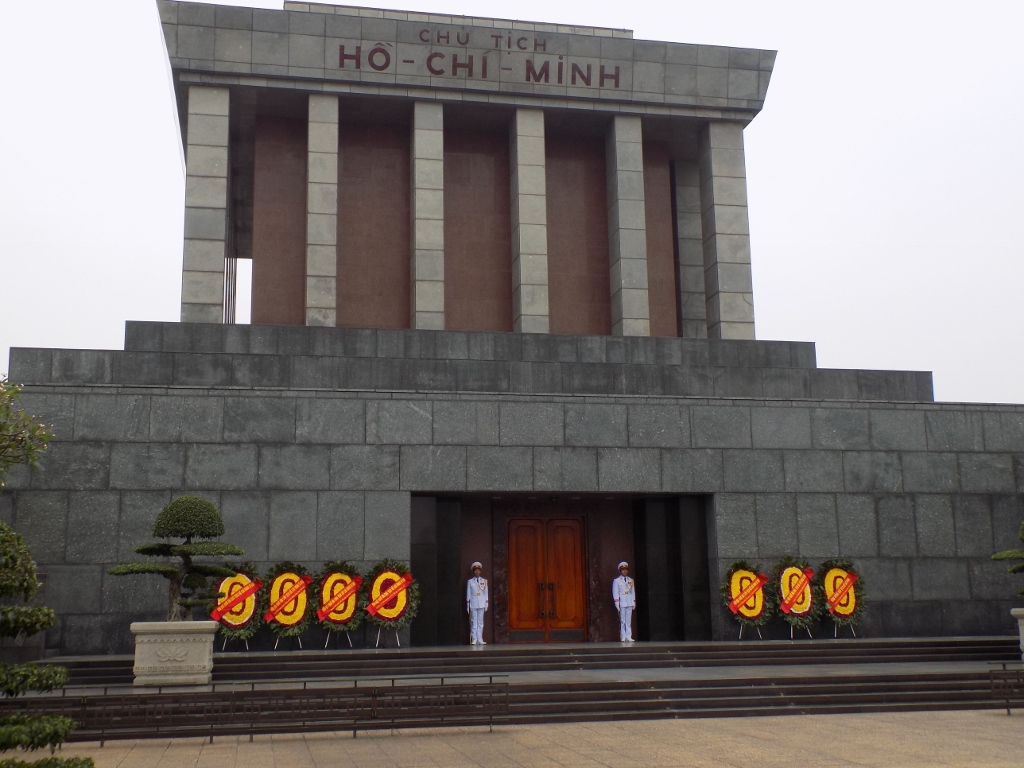 Ho Chi Minh Mausoleum
Ho Chi Minh Mausoleum
Although we wished we had visited the mausoleum, there was nothing we could do about it, so we simply turned the other way and went to the Temple of Literature. This is the oldest university in Vietnam and the place is truly stunning. It was founded in 1070 and it was dedicated to Confucius and his disciples. Originally, it was used as the place for the education of the children coming from the royal family and high aristocracy, but later it also admitted talented sons of ordinary families.
It consists of five interior courtyards that come one after another and each one symbolizes one step in the learning. The first one is to learn how to behave with full respect. Acquiring of knowledge comes later, while the pinnacle is reached when one becomes full of virtues and talented. All of this is, of course, based on the philosophical system developed by Confucius.
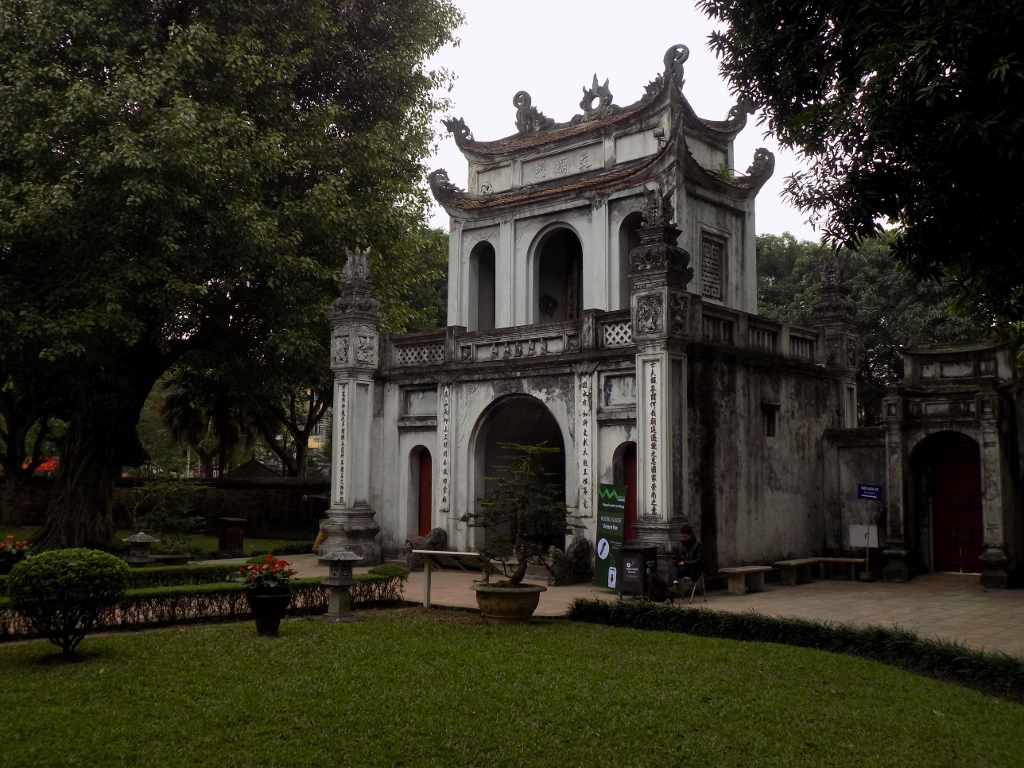 Entrance into the Temple of Literature
Entrance into the Temple of Literature
The first two courtyards contain greenery and ponds, while the remaining three have different buildings and structures. The courtyards are linked by different gates or simple passages. And each one carries a symbolic meaning. For instance, between the second and the third courtyard there is no door or a gate, because “the path of enlightenment is continuous, without any limitations imposed by space and time.”
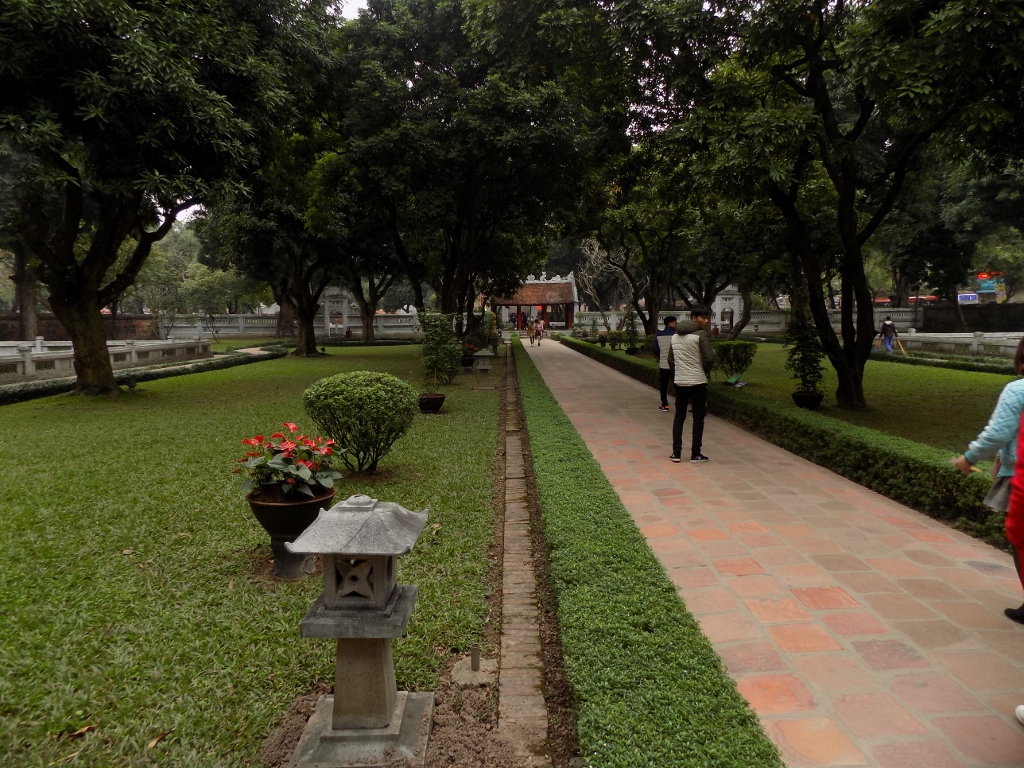 Temple of Literature, the first courtyard
Temple of Literature, the first courtyard
In the third courtyard there are stelae with the names of over one thousand successful candidates who passed the tests for mandarins during the period of over three centuries. It is said that these exams were very rigorous and open for all young men from wealthy families. I found it interesting to read who was prohibited from taking the exams: criminals, musicians and singers, as well as those who were in mourning. By the way, these stelae are originals, since in order to protect them against bombardment during the American War, the Vietnamese buried them and covered them with concrete slabs.
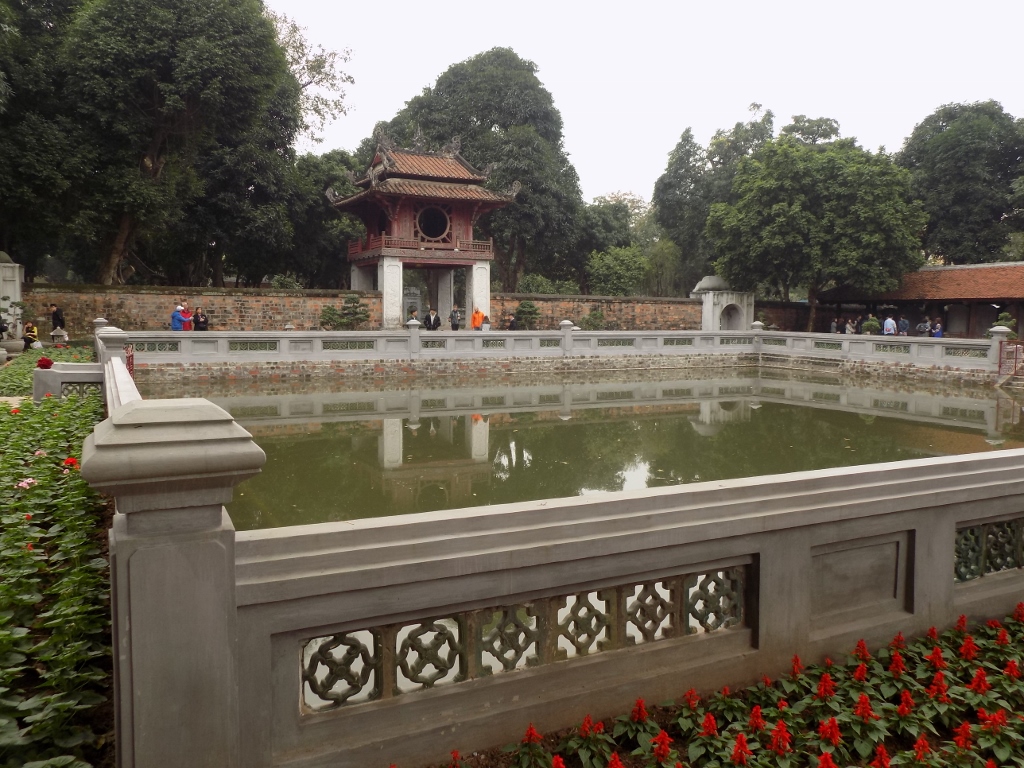 Temple of Literature, the third courtyard
Temple of Literature, the third courtyard
We were additionally fortunate since we came across a large number of young, dressed-up Vietnamese girls and boys who were celebrating their graduation in groups. I truly enjoyed both the beauty of the place and the beauty of the youth. Vietnamese are a very attractive nation and their female beauty is particularly eye-catching.
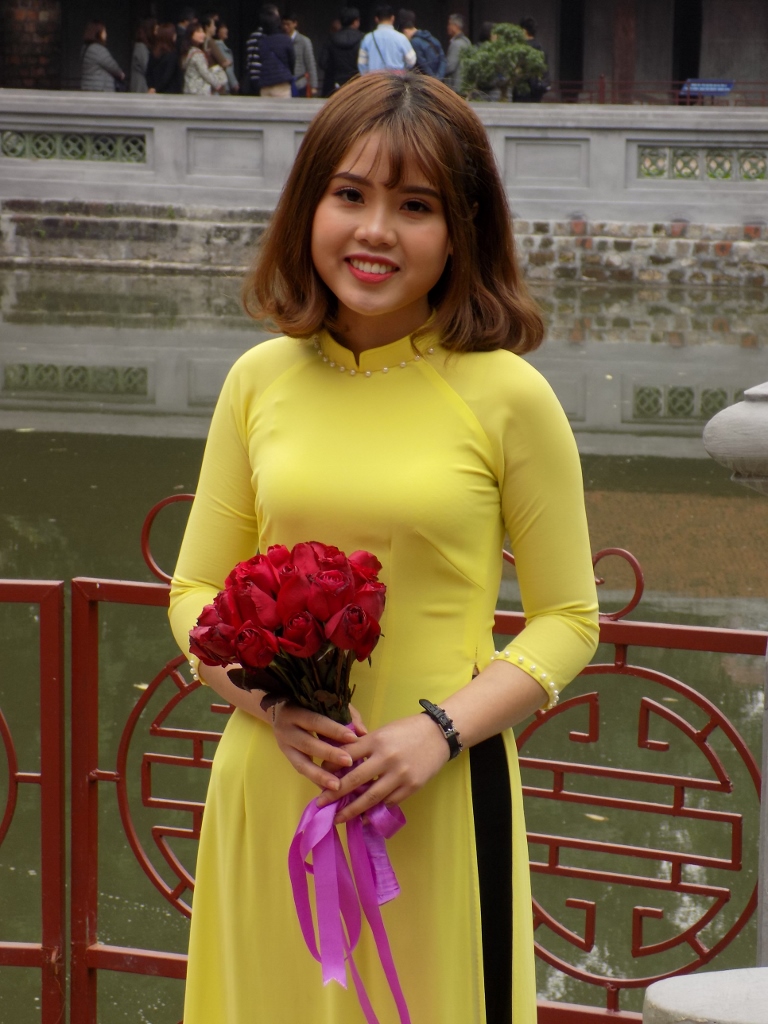 A beautiful young Vietnamese girl
A beautiful young Vietnamese girl
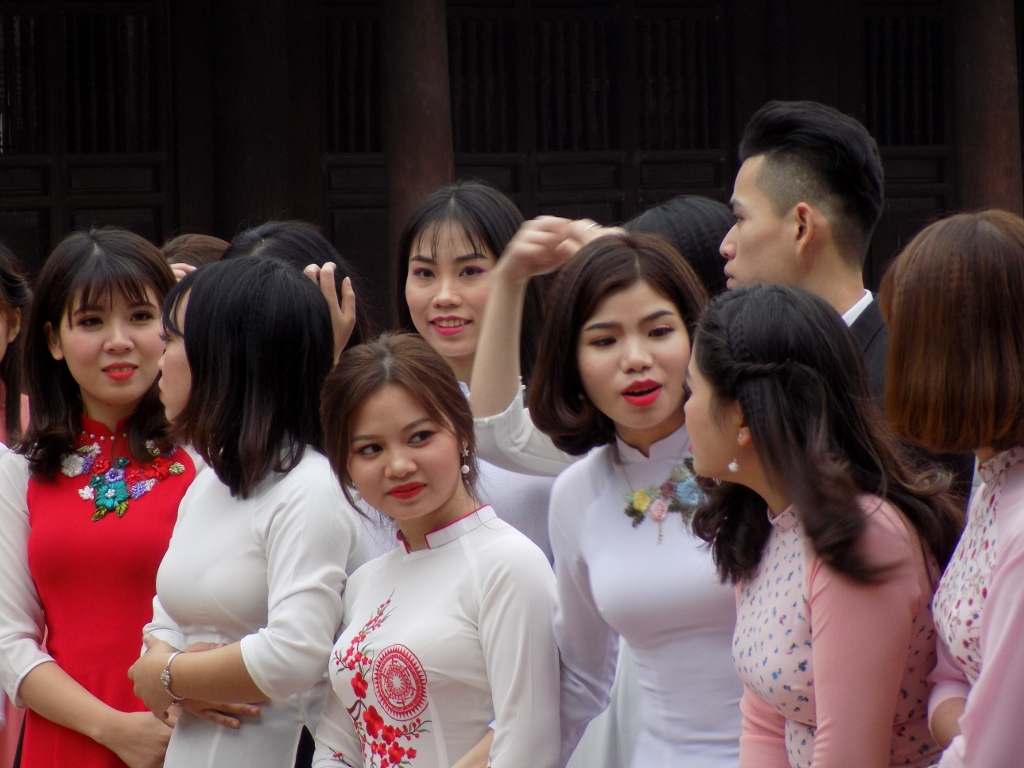 Beautiful Vietnamese youth
Beautiful Vietnamese youth
I thought it was very cute when I saw these young women dressed up for the occasion in formal, academic robes, as well as “civilian” dresses, all meticulously made up and in high heels, but the moment the taking of photos was over it was apparent that most of them struggled with those high heels. Some eventually even gave up, simply taking off their shoes and walking around one of the courtyards barefoot.
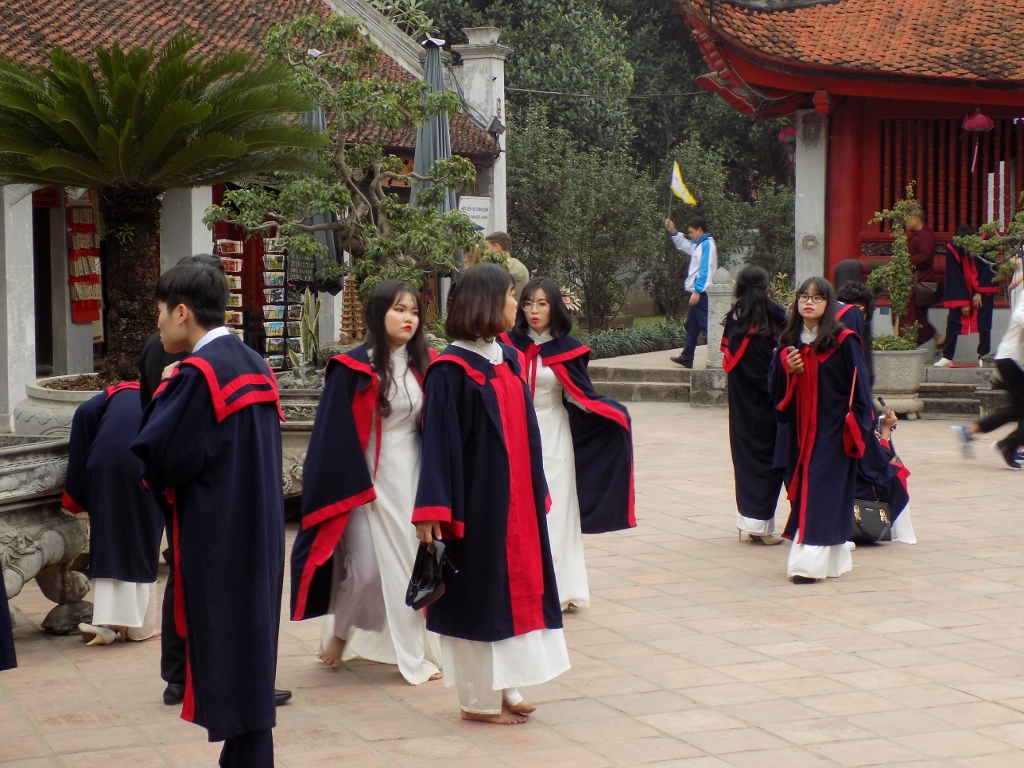 The photo shoot is over
The photo shoot is over
As the day was getting close to its end, we decided first to go to Hoan Kiem lake in order to be able to see the Turtle Tower, one of the symbols of Hanoi, while there was still some daylight. According to the legend, after his fight with the Chinese, Emperor Le Loi returned his magic sword to a golden turtle. After all, the name of the lake, Hoan Kiem, means: the lake of the returned sword.
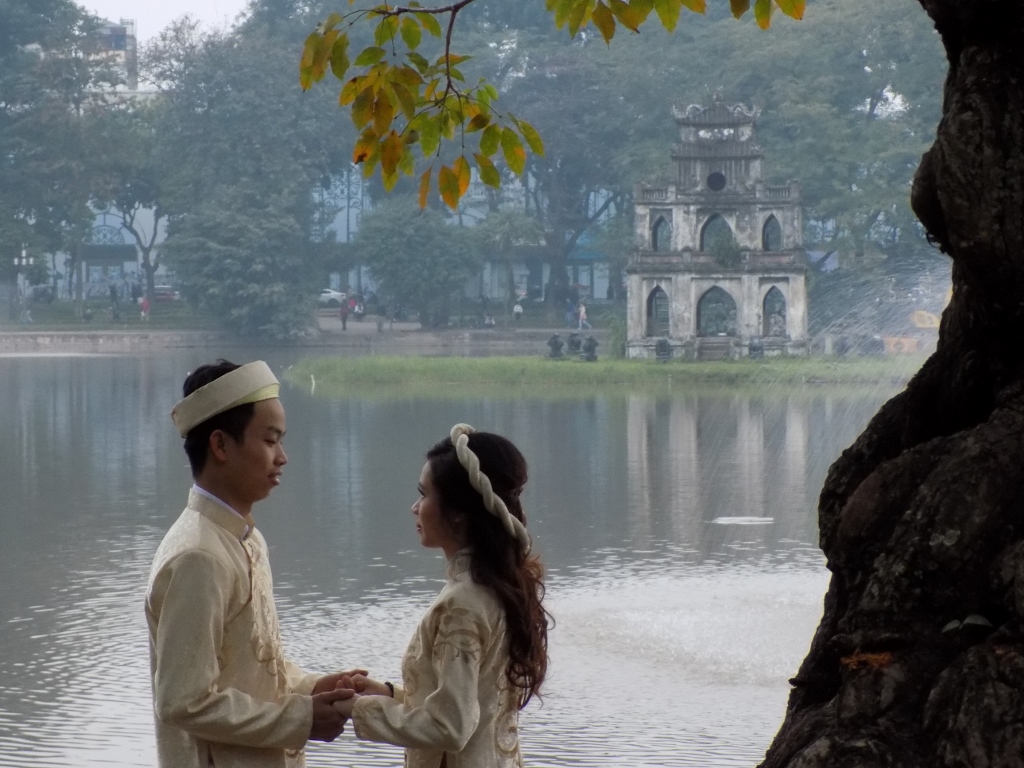 Hoan Kiem lake, Turtle Tower and a couple posing for a photo
Hoan Kiem lake, Turtle Tower and a couple posing for a photo
It was Sunday afternoon and there were a lot of pedestrians, as well as different sights in the part of the city that is closed for traffic on a weekend.
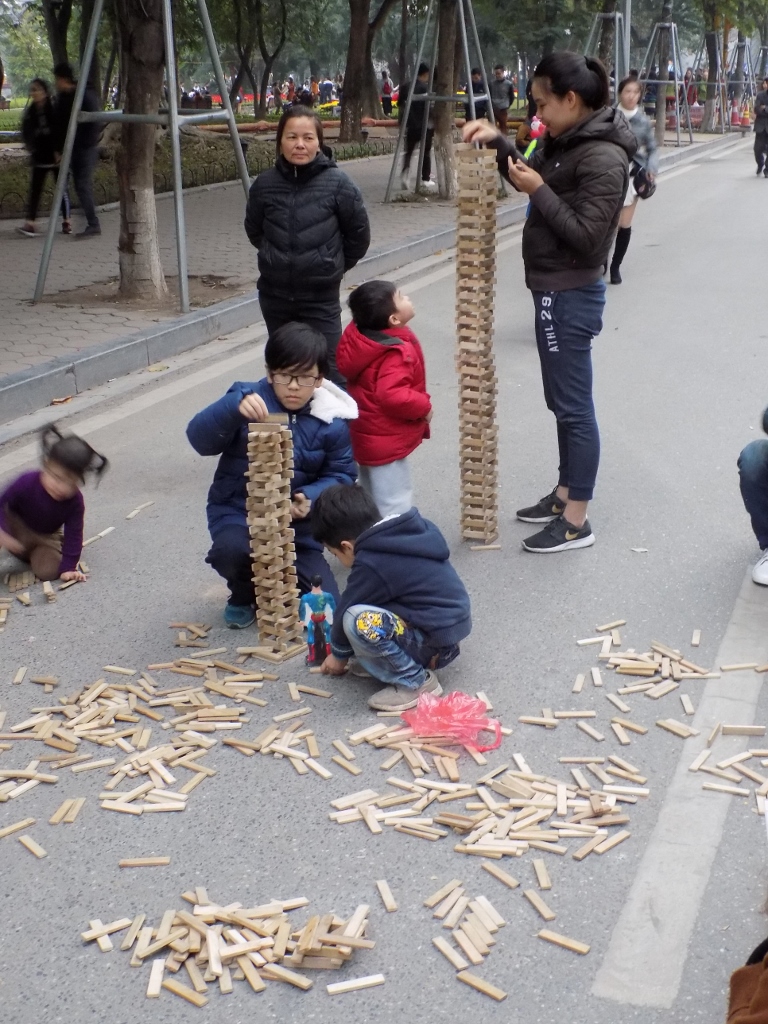 A street next to Hoan Kiem lake, it is important to start practicing patience from the earliest age
A street next to Hoan Kiem lake, it is important to start practicing patience from the earliest age
Here Sneza and I agreed to part for a little while. She sat at a café in order to relax a little and I went to the Hanoi Ceramic Road while there was even little of the daylight. The reason was that I wanted to see directly (and not only from a coach) parts of the biggest mosaic in the world made of ceramic tiles. Namely, parallel to a very busy street, there is a wall, a fence, around 1 to 2 metres high, on which different mosaics have been made using small tiles. And the length of the mosaic is approximately 4 kilometres, with the motives changing every 20 metres or so!
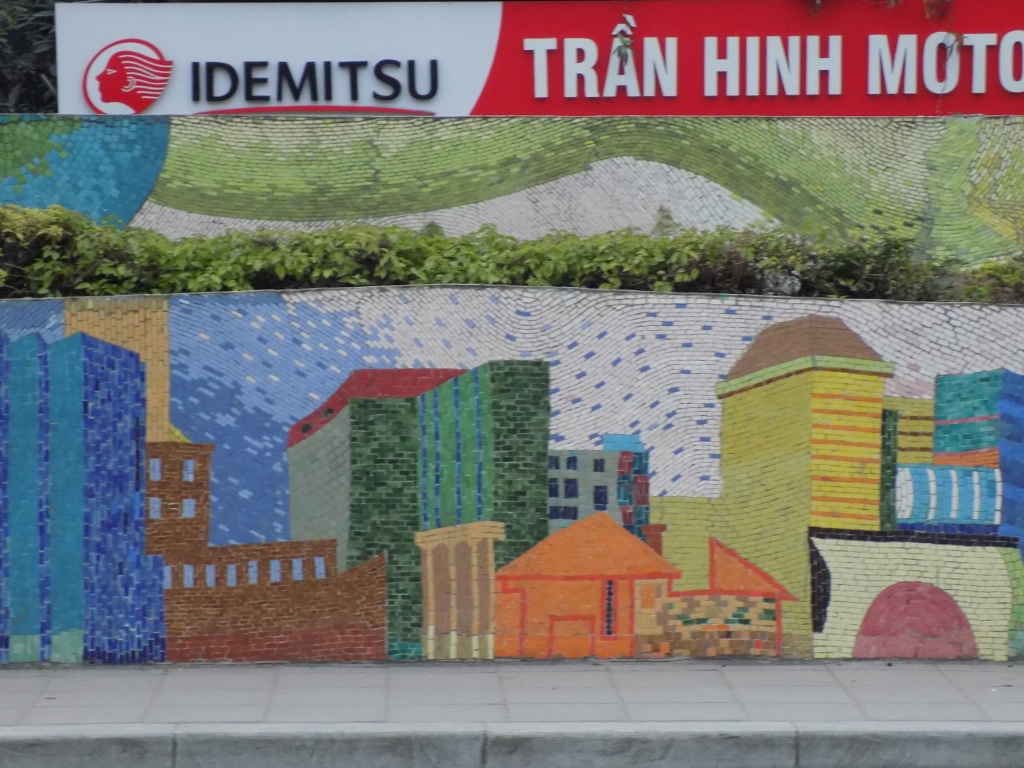 A detail of the biggest ceramic mosaic in the world
A detail of the biggest ceramic mosaic in the world
Then I went back and joined Sneza at the café since we really needed a good rest from a rather strenuous day, taking into account that we walked quite a lot. Then we went for dinner in a nearby restaurant. The sitting arrangement again involved very small stools, while some bigger ones were used as a base of placing metal trays with food. I wanted to eat chicken, but it was not on the menu. Instead, there was a writing on the wall saying “bird salad,” so I took that. As it turned out I got quail (I certainly hope so). But I have to admit it was quite tasty, at least once I managed to remove all the tiny, broken bones from my mouth.
After the dinner, we walked a little more and then went to see the evening show of the famous water puppet theatre. This specific theatre tradition was created in the Red River Delta back in the 11th century. There is a pool with water at the theatre and house-shaped stage curtains, while the musicians who are sitting on both sides play instruments, sing, speak, as well as create special sound effects. The “water puppets” are operated through long bamboo rods by artists who are almost waist-deep in water and who are not seen during the show. The show consists of 14 thematic stories and it was truly impressive. It takes a lot of skills to do the performance. Have a look at short excerpts from the show:
At the end of the show, the skilful artists who operated the puppets came out from behind the state curtains in order to greet the audience.
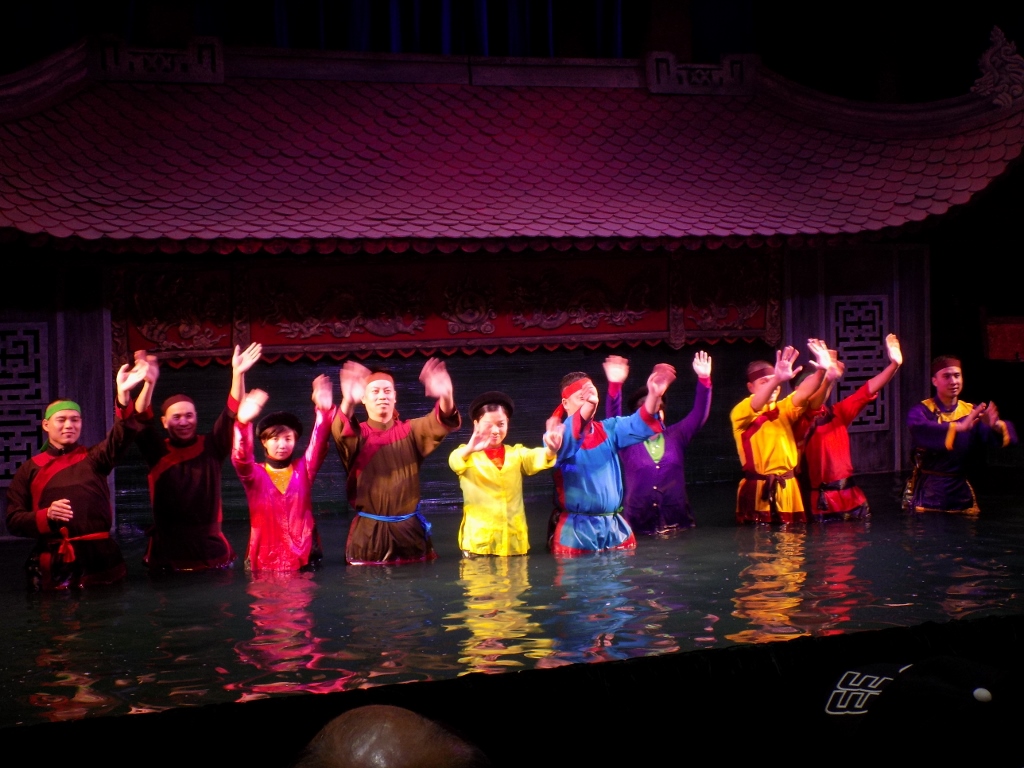 Water puppet theatre
Water puppet theatre